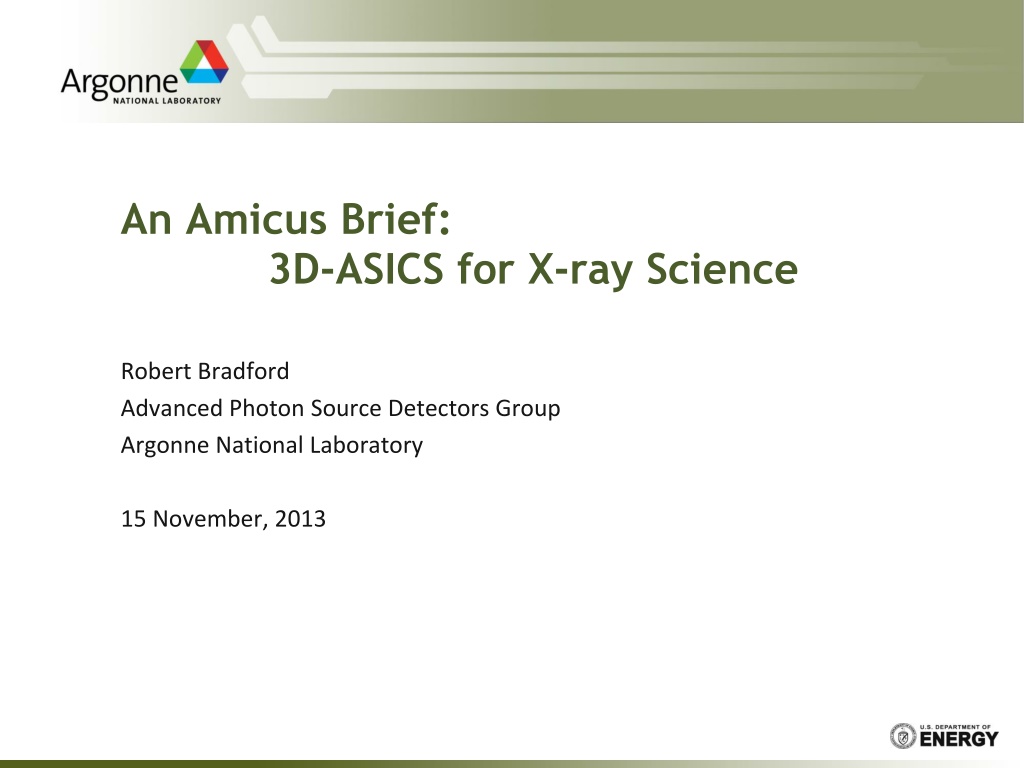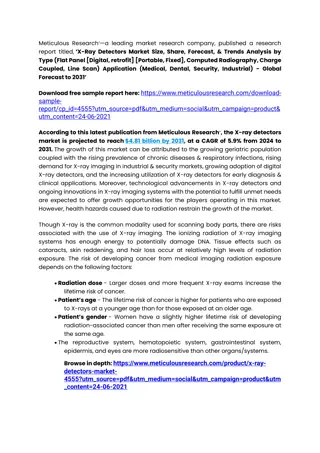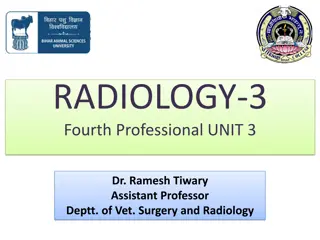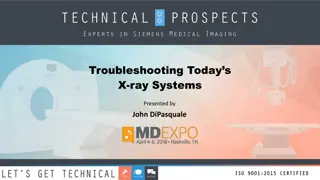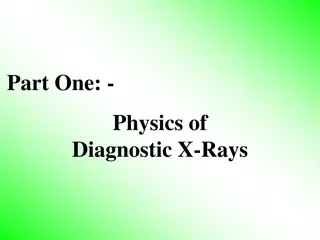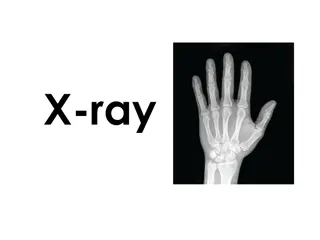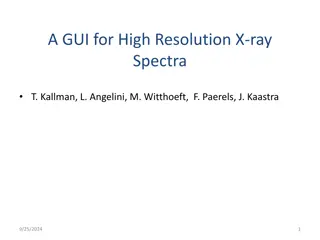Revolutionizing X-Ray Science with 3D-ASICS: A Breakthrough Advancement
Cutting-edge advancements in X-ray science are showcased through the development of 3D-ASICS technology for detectors at the Advanced Photon Source in Argonne National Laboratory. With a diverse user community spanning various scientific disciplines, the need for enhanced detector capabilities is imperative. Custom ASICs have significantly contributed to this evolution, with examples like the AGIPD analog detector demonstrating adaptive gain and impressive frame rates. Ongoing refinements such as gapless coverage in the next iteration of AGIPD highlight the enormous potential of 3D-ASICS in reshaping the landscape of X-ray science.
Download Presentation

Please find below an Image/Link to download the presentation.
The content on the website is provided AS IS for your information and personal use only. It may not be sold, licensed, or shared on other websites without obtaining consent from the author. Download presentation by click this link. If you encounter any issues during the download, it is possible that the publisher has removed the file from their server.
E N D
Presentation Transcript
An Amicus Brief: 3D-ASICS for X-ray Science Robert Bradford Advanced Photon Source Detectors Group Argonne National Laboratory 15 November, 2013
A little background: X-ray Science Advanced Photon Source: Light source up the road Largest user facility in the US Very broad scientific user community biology, chemistry, material science, physics ~80 different experimental end- stations on ~30 beamlines Many simultaneous experiments using variety of techniques Detector needs very diverse, no one-size-fits-all solutions Experiments compromise between speed (frame rate), temporal resolution, energy resolution, spatial resolution, and dynamic range Widely acknowledged that detectors do not meet current needs R. Bradford, 3D-ASICS for X-Ray Science 2
A little background: ASICS in X-Ray Detection http://www.azonano. com/article.aspx?Artic leID=2631 Custom ASICs have become commonplace in synchrotron science during the past ~7 years: Hybrid pixel detectors for x-rays are natural extension of silicon detector work done in HEP Much of work done in Europe building off of LHC Many commercial detectors based on single photon counting: PSI Pilatus 2006 Licensed to Dectris very successful Many efforts in Europe Most important detector at APS for past ~5 years Easy to use, robust, good SNR ~50 systems costing $10-15M C. Broenimann, et al. J. Synchrotron Rad. (2006), 13, 120-130. http://lima.blissgarden.org/cam era/pilatus/doc/index.html http://www.amsci ns.com http://www.imxpad.com R. Bradford, 3D-ASICS for X-Ray Science 3
Simple Example - AGIPD Analog detector with integrating logic for European XFEL Adaptive gain: Sensitivity to single photons or 104 photons http://photon- science.desy.de/research/technical _groups/detectors/projects/agipd/ Analog storage Buffers 352 images to permit 4.5 MHz frame rate. ADC handled off chip. R. Bradford, 3D-ASICS for X-Ray Science 4
Platform being refined for gapless coverage. Next iteration of AGIPD: 3-tier ASIC TSV being explored with existing Medipix3 Chips R. Bradford, 3D-ASICS for X-Ray Science http://aps.anl.gov/Users/3Way/presentations/Graafsma.pdf 5
3D ASICS Huge potential for impacting x-ray science Seen as a key step forward for x-ray detectors: Edge-less sensors without gaps in coverage Smarter pixels for technique specific detectors with fast in-ASIC analysis capability Spatial resolution is key to many experiments Hybrid pixels typically ~50-200 m CCDs and CMOS can provide 5-30 m pixels Overcomes key compromises 3D ASICS: intelligent pixels + spatial resolution + high frame rates +??? R. Bradford, 3D-ASICS for X-Ray Science 6
